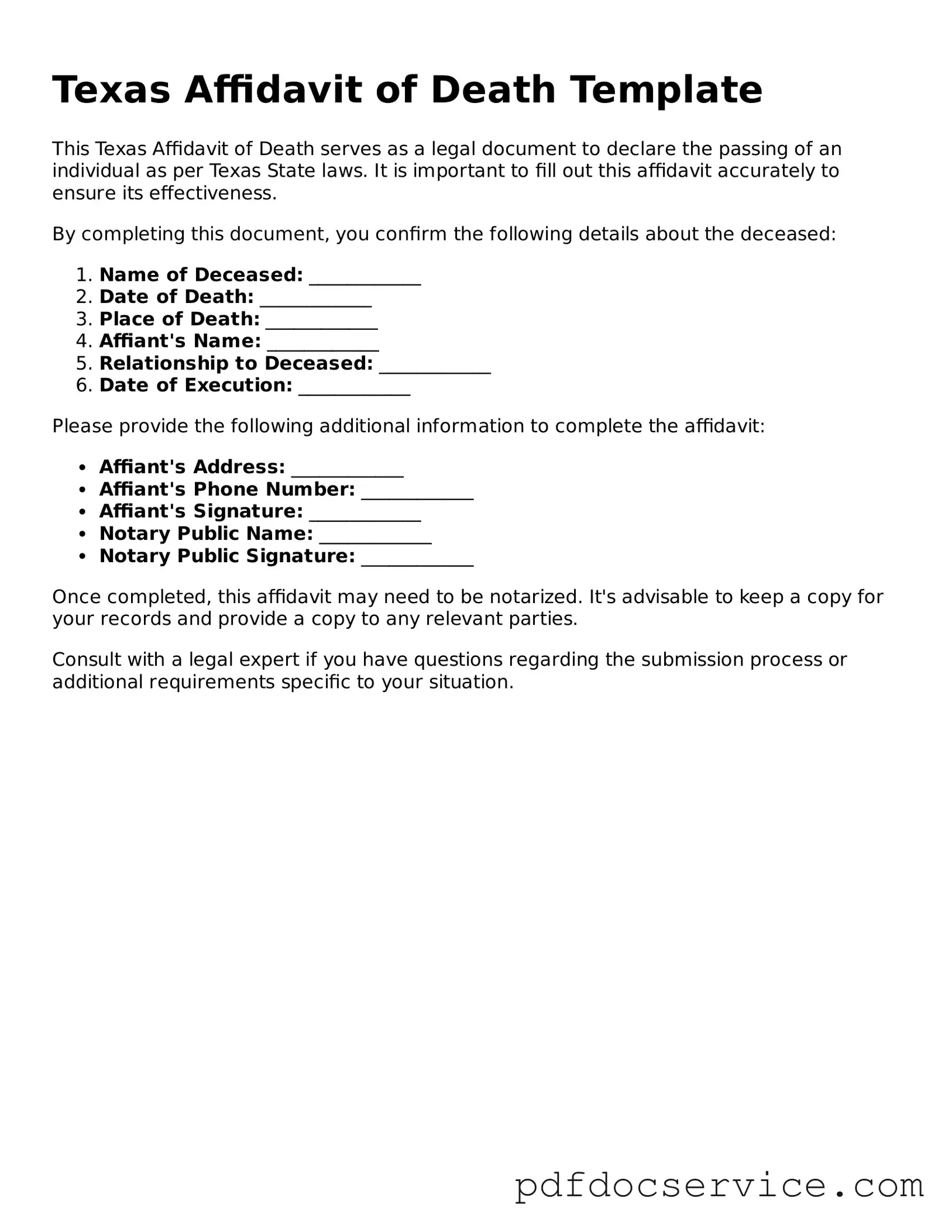What is a Texas Affidavit of Death?
The Texas Affidavit of Death is a legal document used to officially declare the death of an individual. This form is often necessary for settling estates, transferring property, and updating records. It serves as proof of death for various legal and administrative purposes.
Who can file a Texas Affidavit of Death?
Generally, anyone who has personal knowledge of the deceased's death can file this affidavit. This includes family members, friends, or legal representatives. However, it’s advisable to consult with an attorney if you have questions about your eligibility.
The Texas Affidavit of Death typically requires the following information:
-
The full name of the deceased
-
The date of death
-
The place of death
-
Details about the affiant (the person filing the affidavit)
-
Any additional relevant information, such as the deceased's Social Security number
Is the Texas Affidavit of Death a public document?
Yes, once filed with the appropriate county office, the Texas Affidavit of Death becomes a public record. This means that anyone can request to see it. However, certain sensitive information may be redacted to protect privacy.
Do I need to notarize the affidavit?
Yes, the Texas Affidavit of Death must be notarized. This means that you will need to sign the document in front of a notary public, who will then verify your identity and witness your signature. Notarization adds an extra layer of authenticity to the document.
Where do I file the Texas Affidavit of Death?
You should file the affidavit in the county where the deceased passed away. Typically, this is done at the county clerk’s office. Some counties may offer online filing options, so it’s worth checking their website for specific instructions.
What happens after I file the affidavit?
Once the Texas Affidavit of Death is filed, it becomes part of the public record. You may need to provide copies of the affidavit to various institutions, such as banks or insurance companies, to settle the deceased's affairs. It’s important to keep copies for your records as well.
Can I amend the Texas Affidavit of Death after it has been filed?
Amending a Texas Affidavit of Death can be complicated. If you discover an error after filing, it is best to consult with an attorney to understand the proper steps to correct the information. In some cases, a new affidavit may need to be filed.
